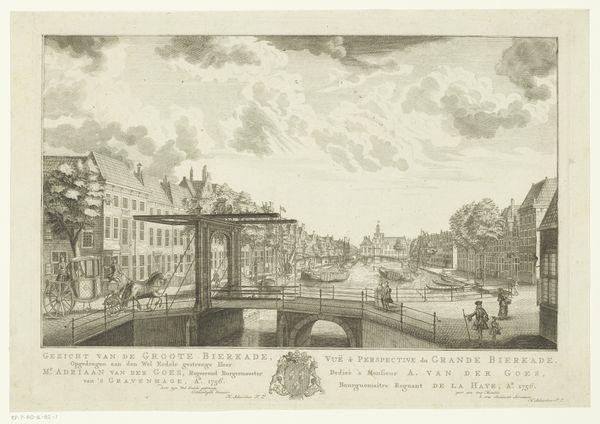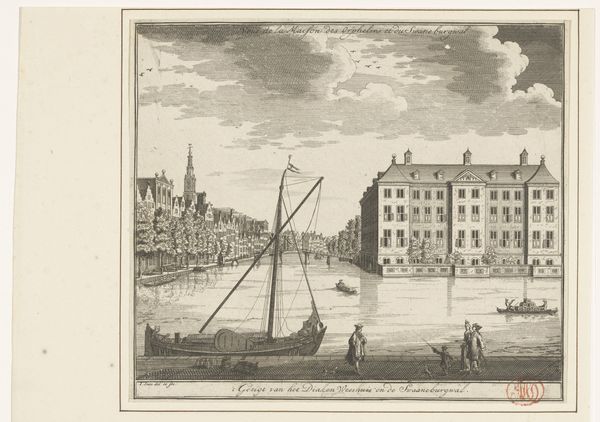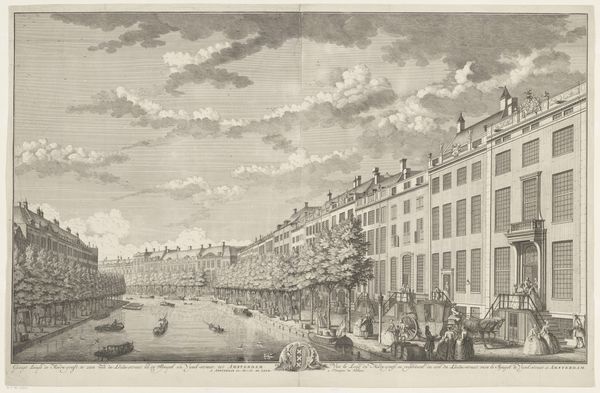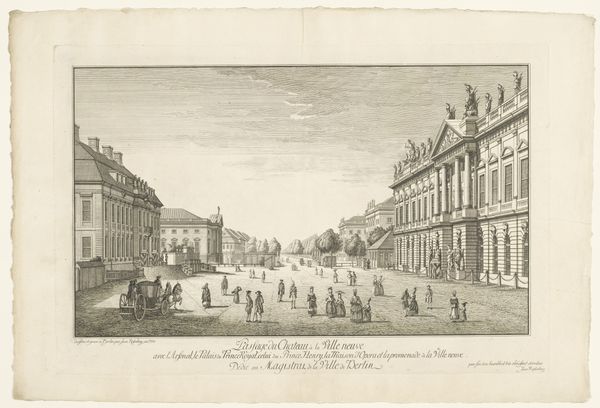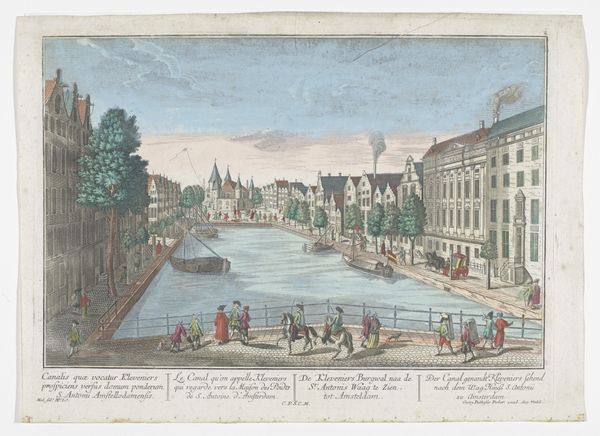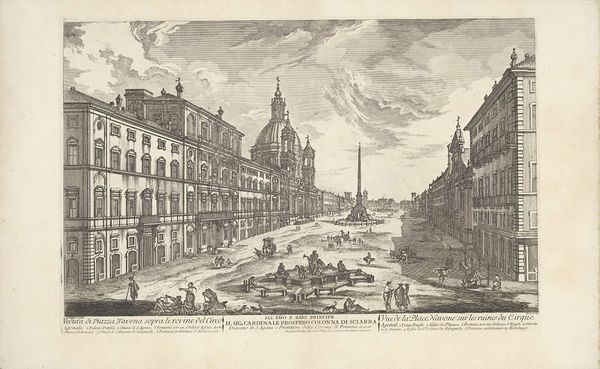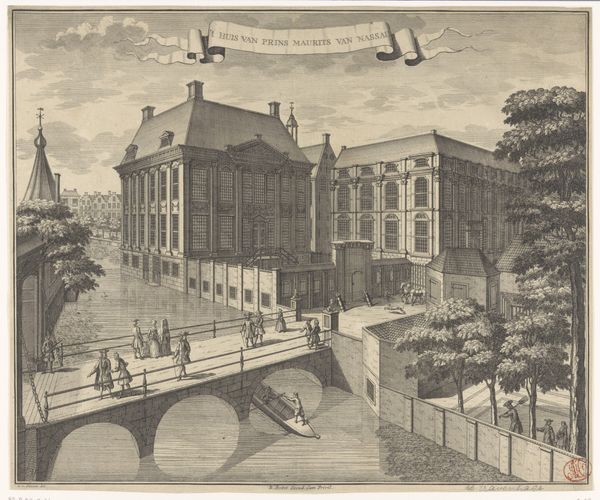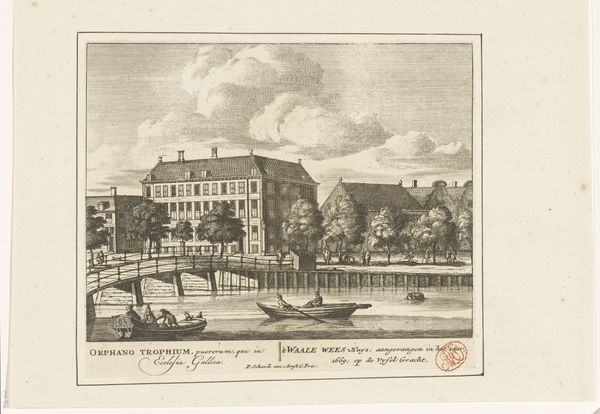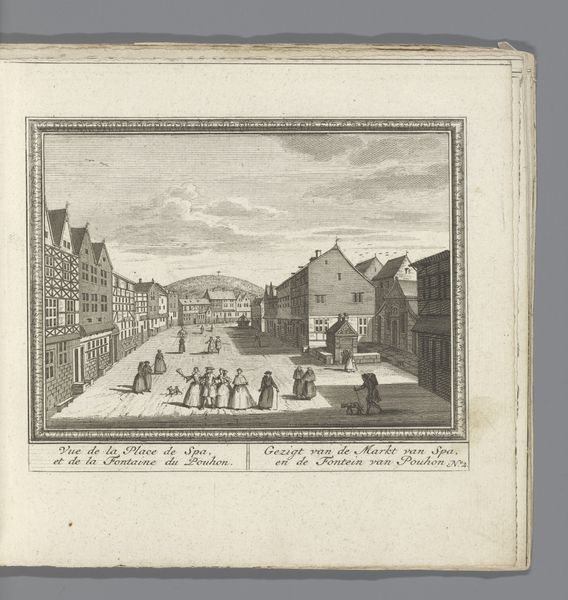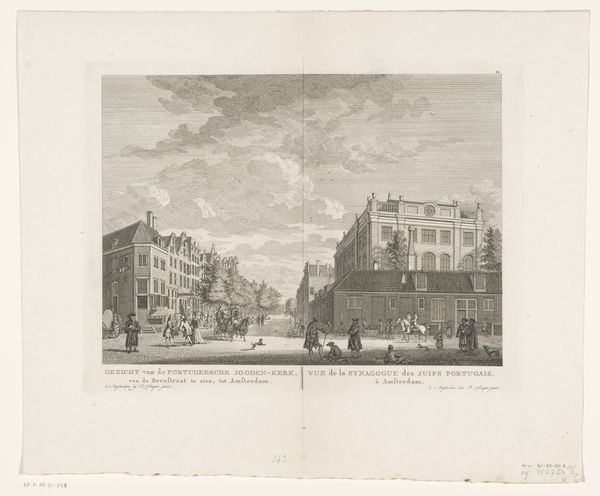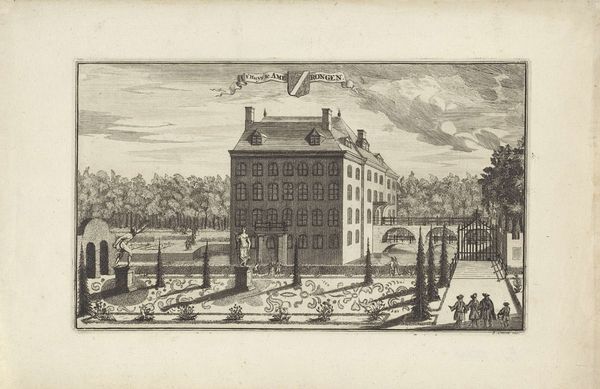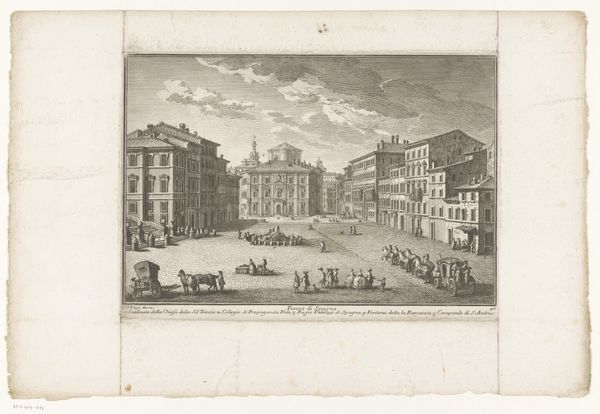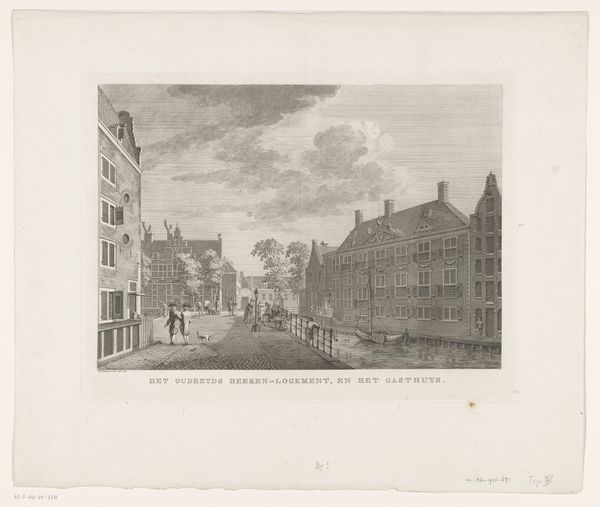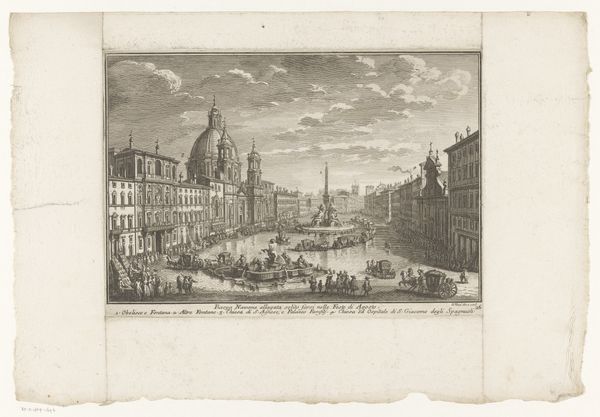
Gezicht op de Kloveniersburgwal met het Trippenhuis en de Waag op de Nieuwmarkt c. 1700 - 1748
0:00
0:00
janismit
Rijksmuseum
print, engraving
#
baroque
#
dutch-golden-age
# print
#
cityscape
#
engraving
Dimensions: height 172 mm, width 194 mm
Copyright: Rijks Museum: Open Domain
This is Jan Smit the Elder’s rendering of the Kloveniersburgwal with the Trippenhuis and the Waag on the Nieuwmarkt. The small etching speaks volumes about Amsterdam’s Golden Age. We see a vibrant urban landscape, but what stories lie beneath the surface of this seemingly placid scene? How did Amsterdam become a global center of trade and culture, and at what cost? The wealth that built these grand houses and bustling markets was directly tied to the Dutch East India Company and its exploitation of people and resources in places like Indonesia and Brazil. The artist's careful depiction of the city's architecture invites us to reflect on how the built environment encodes power and privilege. If the Trippenhuis represents the opulence of the merchant class, the Waag, initially a city gate, reminds us of the structures of control that governed urban life. This is a space where identities intersected and diverged, where some prospered while others were marginalized. Take a moment to reflect on these histories and how they continue to resonate today.
Comments
No comments
Be the first to comment and join the conversation on the ultimate creative platform.
